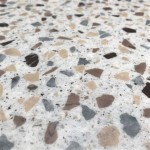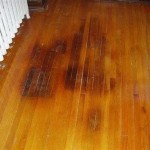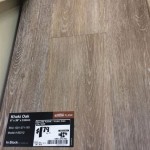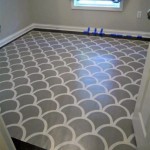Vinyl flooring is a popular choice for both residential and commercial spaces due to its affordability, easy installation, and low-maintenance. However, one of the most common problems with this type of flooring is the inevitable gaps that form over time. Fortunately, there are several ways to fill in gaps in vinyl flooring, depending on the size and complexity of the gap.
Evaluating the Gap
The first step in filling the gap in vinyl flooring is to evaluate the size and shape of the gap. If the gap is small and narrow, you may be able to fill it with a caulk or putty. However, if the gap is wider and more complex, you may need to use a specific vinyl gap filler. Additionally, you will want to make sure that the gap is completely clean and free of debris before you begin the repair process.
Caulk or Putty
For minor gaps, caulk or putty can be used to fill in the gap. Caulk is a type of sealant that is applied in a thin line along the gap. Make sure to choose a caulk that is specifically designed for vinyl flooring. Putty is a thicker type of filler that is available in various colors to match your vinyl flooring. To use putty, simply apply it to the gap and use a putty knife to smooth it out.
Vinyl Gap Filler
For larger and more complex gaps, you will need to use a vinyl gap filler. Vinyl gap filler is a type of adhesive that is designed to fill in gaps in vinyl flooring. It is available in a variety of colors and can be used to fill in gaps up to 1/4 inch wide. To use vinyl gap filler, simply apply it to the gap and use a putty knife to smooth it out. Allow the filler to dry completely before walking on the floor.
Fixing Loose Vinyl Flooring
In some cases, the gaps in vinyl flooring may be caused by loose tiles or planks. If this is the case, you will need to reattach the loose piece of flooring. To do this, simply use a vinyl adhesive to secure the loose piece in place. Make sure to apply the adhesive evenly and press the piece firmly into place. Allow the adhesive to dry completely before walking on the floor.
Maintenance
In order to prevent future gaps in vinyl flooring, it is important to practice proper maintenance. Make sure to sweep or vacuum the floor regularly to remove dirt and debris, as this can cause gaps to form over time. Additionally, avoid using harsh cleaning solutions on the floor, as these can damage the vinyl. Finally, be sure to inspect the floor regularly to check for any new gaps or loose pieces of flooring.
Conclusion
Filling gaps in vinyl flooring is an easy and affordable way to repair your flooring and make it look like new. By evaluating the size and shape of the gap, you can determine the best method for filling it in. For small gaps, caulk or putty can be used, while larger gaps may require a vinyl gap filler. Additionally, it is important to practice proper maintenance in order to prevent future gaps from forming. With a little time and effort, you can easily fix the gaps in your vinyl flooring.















Related Posts








